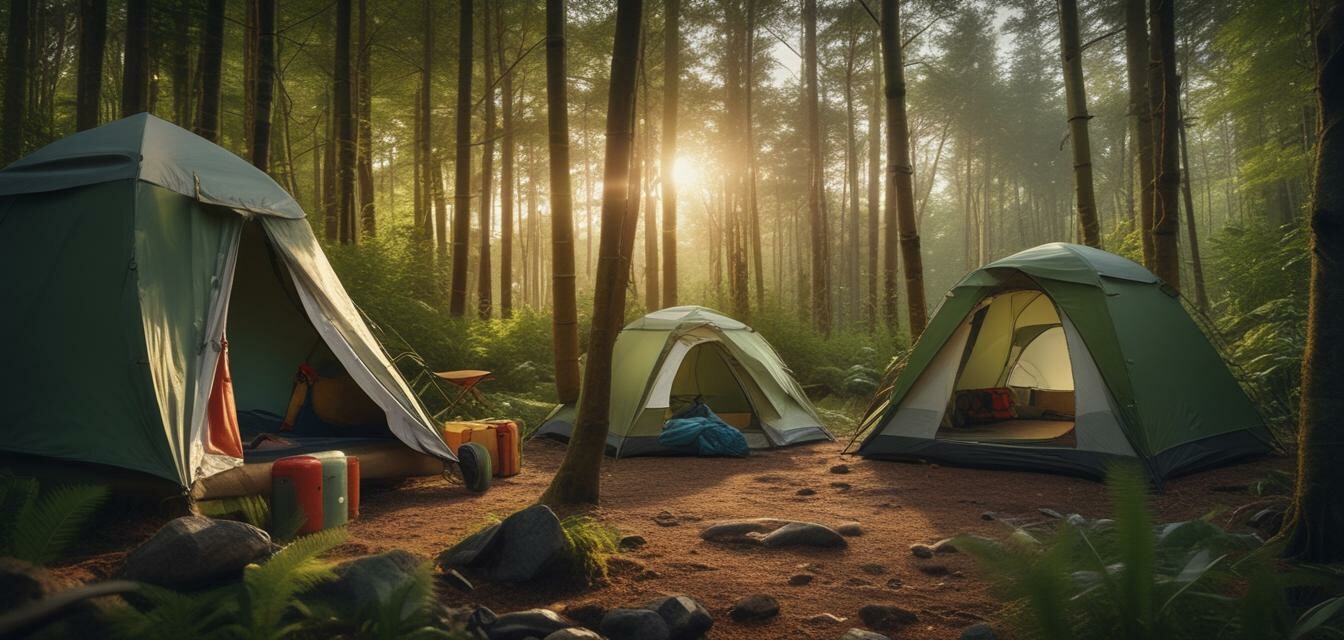
As an Amazon Associate, I earn from any qualifying purchases, at No Extra Cost to You.
Emerging trends in eco-friendly camping gear
Key Takeaways
- Sustainable materials are gaining popularity in the outdoor gear industry.
- Innovation in design is focusing on reduction of waste and efficient production.
- Consumers are increasingly prioritizing eco-friendliness in their purchasing decisions.
- Brands are adopting practices that contribute to environmental conservation.
- Shared resources and community efforts are enhancing eco-friendly camping experiences.
As we venture into a new era of outdoor exploration, eco-consciousness is becoming an integral part of the camping experience. This article delves into the emerging trends in eco-friendly camping gear that reflect a commitment to sustainability. With newer materials and innovative designs being integrated into outdoor products, the industry is poised for a green revolution.
The rise of sustainable materials
As the awareness surrounding environmental issues increases, the use of sustainable materials in camping gear has surged. Manufacturers are now turning to renewable sources to produce items that are not only functional but also environmentally friendly.
| Material | Description | Benefits |
|---|---|---|
| Bamboo | A rapidly renewable resource used for various gear components. | Durable, lightweight, and biodegradable. |
| Recycled plastics | Utilization of plastic waste to create new materials. | Reduces landfill waste and carbon footprint. |
| Organic cotton | Cotton grown without harmful pesticides and fertilizers. | Safer for the environment and healthier for consumers. |
| Hemp | A strong, durable fiber that requires minimal resources to grow. | Biodegradable and offers UV resistance. |
| Natural rubber | Derived from rubber trees and is compostable. | Flexible, durable, and biodegradable. |
Innovative designs promoting sustainability
With the shift towards eco-friendliness, the designs of camping gear have also seen noteworthy innovations. Manufacturers are focusing on minimizing waste and maximizing utility.
- Modular Gear: Camping gear that can be adapted or expanded for different uses allows for reduced purchases.
- Durability over Disposability: Investing in multifunctional, durable gear leads to less waste.
- Upcycling: Companies are upcycling old gear into new products, giving items a new life instead of adding to landfills.
- Minimal Packaging: Brands are reducing packaging materials and opting for recycled options.
Consumer awareness and preferences
The modern consumer is more informed and conscientious than ever. An increasing number of outdoor enthusiasts are looking for eco-friendly options when planning their gear purchases.
"Sustainability is no longer just a trend—it's becoming a necessity for brands to remain competitive."
Community efforts enhancing eco-friendly camping
Another significant trend is the rise of community initiatives aimed at protecting nature and promoting responsible camping practices. These efforts include:
- Trail Cleanups: Community groups organize regular cleanups to maintain natural trails.
- Leave No Trace Programs: Education around minimizing the impact of camping on the environment.
- Shared Gear Programs: Offering gear libraries that allow people to borrow rather than buy.
- Eco-Friendly Campsites: More campsites are adopting green practices like solar energy and composting toilets.
The future of eco-friendly camping gear
As we move forward, the eco-friendly camping gear market is set to grow. The combination of sustainability, community involvement, and technology innovation will be crucial to the future of the outdoor industry.
Pros
- Environmentally conscious purchasing decisions shrink the carbon footprint.
- Sustainable gear often features longer lifespans, saving money in the long run.
- Contributes to protecting the beautiful landscapes we love to explore.
Cons
- Some eco-friendly camping gear can be more expensive than conventional products.
- Limited availability in remote locations due to niche market focus.
As the demand for sustainability grows, the outdoor gear industry is undergoing a transformation. For more information on sustainable options available in different categories, check out our backpacks, camera gear, and clothing & footwear sections.
Conclusion
Understanding the emerging trends in eco-friendly camping gear allows consumers to make informed choices. By focusing on sustainable materials and practices, we can enhance our outdoor experiences while protecting our planet for future generations. It’s an exciting time to be an outdoor enthusiast, with options that not only benefit us but also the environment. Stay updated with more backpacking news as the outdoor industry continues to evolve.